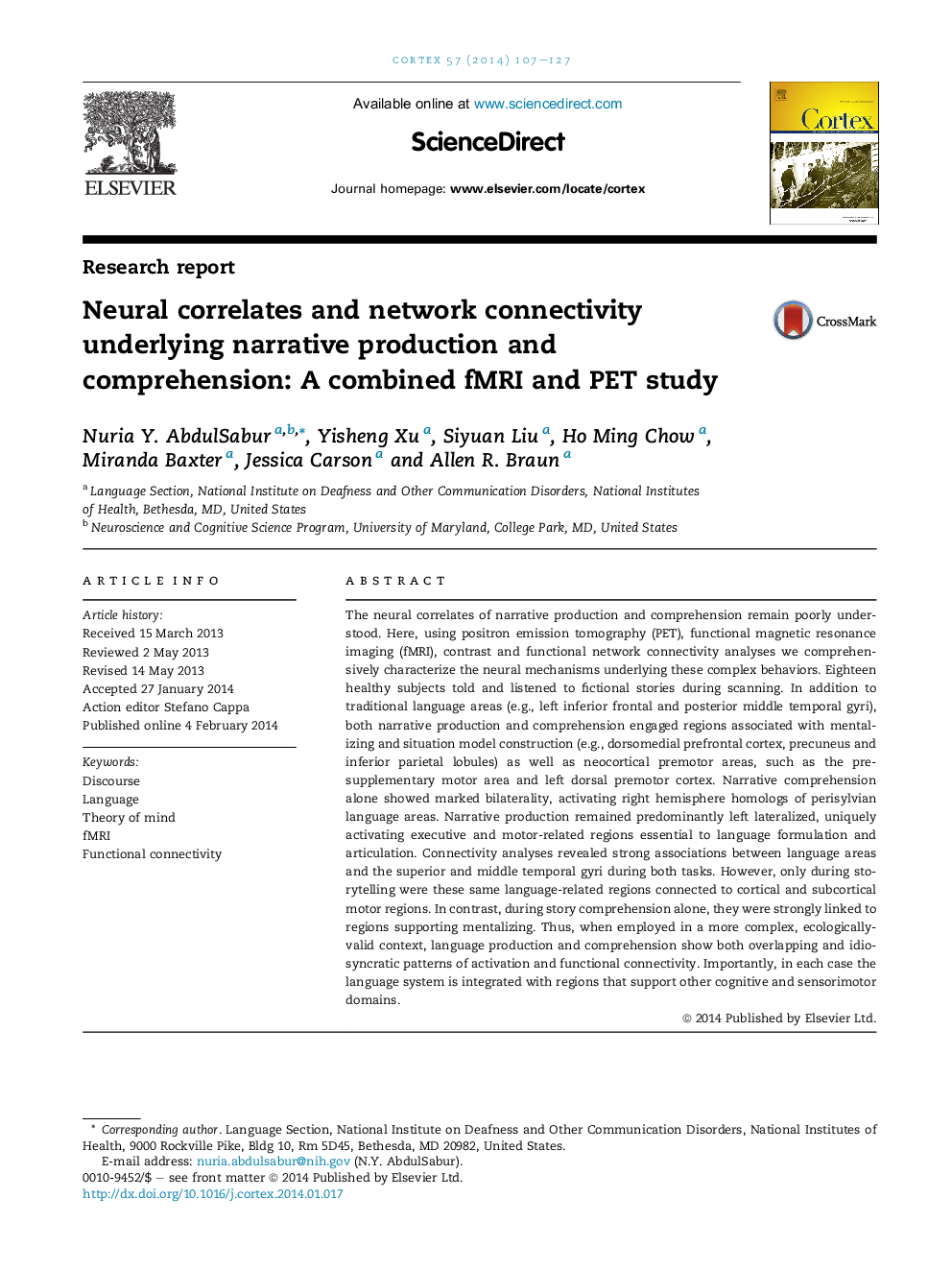| Article ID | Journal | Published Year | Pages | File Type |
|---|---|---|---|---|
| 7315472 | Cortex | 2014 | 21 Pages |
Abstract
The neural correlates of narrative production and comprehension remain poorly understood. Here, using positron emission tomography (PET), functional magnetic resonance imaging (fMRI), contrast and functional network connectivity analyses we comprehensively characterize the neural mechanisms underlying these complex behaviors. Eighteen healthy subjects told and listened to fictional stories during scanning. In addition to traditional language areas (e.g., left inferior frontal and posterior middle temporal gyri), both narrative production and comprehension engaged regions associated with mentalizing and situation model construction (e.g., dorsomedial prefrontal cortex, precuneus and inferior parietal lobules) as well as neocortical premotor areas, such as the pre-supplementary motor area and left dorsal premotor cortex. Narrative comprehension alone showed marked bilaterality, activating right hemisphere homologs of perisylvian language areas. Narrative production remained predominantly left lateralized, uniquely activating executive and motor-related regions essential to language formulation and articulation. Connectivity analyses revealed strong associations between language areas and the superior and middle temporal gyri during both tasks. However, only during storytelling were these same language-related regions connected to cortical and subcortical motor regions. In contrast, during story comprehension alone, they were strongly linked to regions supporting mentalizing. Thus, when employed in a more complex, ecologically-valid context, language production and comprehension show both overlapping and idiosyncratic patterns of activation and functional connectivity. Importantly, in each case the language system is integrated with regions that support other cognitive and sensorimotor domains.
Related Topics
Life Sciences
Neuroscience
Behavioral Neuroscience
Authors
Nuria Y. AbdulSabur, Yisheng Xu, Siyuan Liu, Ho Ming Chow, Miranda Baxter, Jessica Carson, Allen R. Braun,
